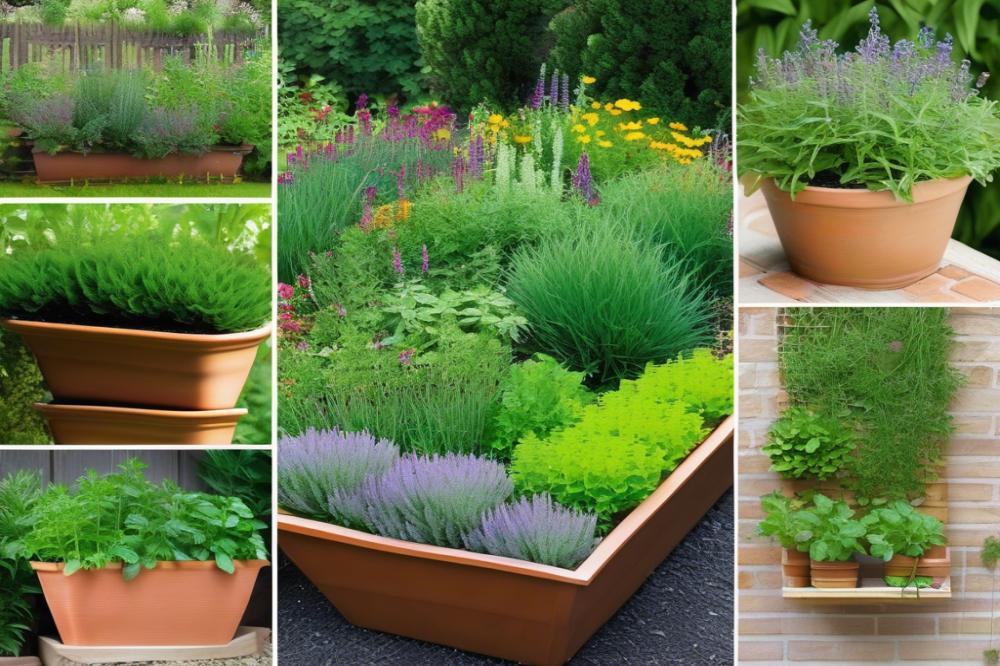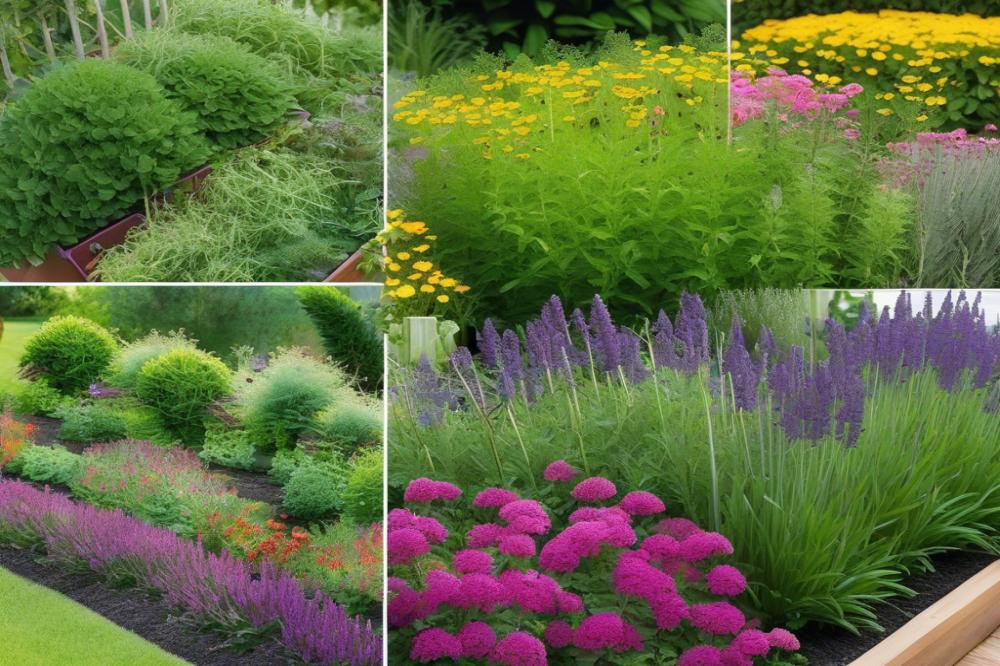Understanding the Importance of Herb gardening
Herb gardening offers many rewards. People cultivating herbs in their homes can enhance their meals and breathe life into dull recipes. Whether you’re growing indoor herbs on a sunny kitchen windowsill or tending to outdoor herbs in a large garden, the benefits speak for themselves. Fresh herbs not only improve flavor but also provide a burst of nutrients and aromas.
The practice of Pruning Herbs plays a vital role in their overall wellness. Regular trimming encourages new growth and helps maintain a healthy shape. When herb care becomes a part of your routine, plants become more productive. Stronger, fuller herbs yield more foliage and flavor, supporting better dishes all around. Knowing when and how to prune can make a significant difference in plant health.
Harvesting Herbs correctly is equally crucial. Timing matters. Picking leaves at optimal moments ensures maximum flavor and potency. Careful harvesting methods promote longevity, allowing you to enjoy your herbs for longer periods. The direct connection between proper harvesting and continued growth cannot be ignored. Without it, plants may suffer or become less vibrant over time.
Gardening isn’t just about planting; it involves thoughtful maintenance too. Embracing effective pruning techniques enhances the journey. A well-cared-for herb garden becomes a treasure trove of fresh tastes, enriching not only your kitchen but also your overall cooking experience.
Pruning Herbs


Pruning involves cutting specific parts of plants. This technique is essential for promoting healthy growth and improving plant health. By removing certain stems and leaves, you can encourage new growth and more vibrant flavors in your herbs. Garden maintenance becomes easier when you regularly prune your plants.
Timing: When to Prune for Optimal Growth
Timing plays a vital role in herb care. Most herbs benefit from pruning in the spring, just before their growth spurt begins. Indoor herbs may require attention year-round, especially when they start to look leggy. Regular trimming throughout the growing season can stimulate more branching and fuller plants. Pay attention to the blooming cycle, as some herbs, like basil, often lose flavor once they flower.
Common Pruning Techniques for Different Herb Types
Each type of herb has specific pruning methods that yield the best results. For basil, pinch off the tips to encourage bushy growth. Other herbs, like rosemary, can be trimmed back more drastically to maintain size and shape. Mint often needs frequent trimming to prevent it from becoming too woody. Thyme and oregano benefit from light trimming to promote fresh growth. Understanding these pruning techniques can make a big difference in your kitchen gardening endeavors.
Tools and Equipment Needed for Effective Herb Pruning
Having the right tools simplifies the pruning process. Sharp scissors or pruning shears are essential for clean cuts. Dirty or blunt tools can damage plants and lead to disease. A small garden trowel can help with removing unwanted foliage. For larger outdoor herbs, consider using loppers for thicker stems. Regularly cleaning your tools prevents the spread of pests or diseases. Following these recommendations will make your herb care more effective.
Herb Care for Optimal Growth


Best Practices for General Herb Care
Caring for herbs starts with understanding their needs. Regular monitoring of your plants helps catch issues early. Always choose a sunny spot for outdoor herbs. Indoor herbs like basil and parsley thrive near windows. Using suitable pots with drainage holes prevents waterlogging. Inspect leaves for pests or diseases regularly. A clean workspace in your garden aids in plant health. Mulching around herbs can conserve moisture and suppress weeds.
How Pruning Contributes to Healthy Plant Development
Pruning techniques play a valuable role in herb care. Removing spent flowers encourages new growth. Cutting back herbs keeps them bushy and productive. This action also promotes better air circulation among the leaves. Each time you prune, you’re shaping the plant for optimal growth. A good rule is to cut about a third of the plant without overdoing it. Lightly trimming during the growing season can result in larger yields.
Nutrient Requirements and Soil Health for Herbs
Herbs generally thrive in well-drained, fertile soil. Soil health is essential for productive kitchen gardening. Mixing organic compost into the soil provides necessary nutrients. Regularly testing soil pH can help maintain a balanced environment. Low-nutrient soils often require additional fertilizers. A slow-release fertilizer can sustain nutrient levels over time. Remember, too much fertilizer can harm herbs. Observing the plants can reveal if they need extra care.
Watering Techniques to Support Growth
Watering is critical to growing healthy indoor and outdoor herbs. Soil should be kept moist, but not soggy. Checking the top inch of soil is a good practice before watering. Early morning is the best time to water herbs. This method reduces evaporation and allows plants to absorb moisture effectively. In hot weather, herbs may need extra attention. Avoid getting moisture on the leaves to prevent fungal diseases. Utilizing a drip irrigation system can be beneficial for larger garden setups.
Harvesting Methods


Techniques for Effectively Harvesting Herbs
To harvest herbs effectively, use clean, sharp scissors or garden shears. This helps make precise cuts, minimizing damage to the plants. When gathering leaves, aim for the outer stems. Always take no more than one-third of the plant at a time. This practice supports continued growth and maintains plant health. Gently pinch off leaves, or cut the stems just above a leaf node. This encourages new growth and keeps your garden flourishing.
When to Harvest for Peak Flavor and Potency
Timing is crucial for harvesting. Most herbs reach their peak flavor just before they flower. This is when the essential oils are at their highest concentration, enhancing taste. Early mornings are the best time to gather herbs. At this hour, the moisture content is higher, leading to more intense aromas. For hardy herbs, like rosemary, late afternoon is also acceptable. Observing the growth pattern can help you know the right moment.
Difference Between Harvesting Indoor Herbs and Outdoor Herbs
Harvesting indoor herbs requires a gentler approach. These plants typically grow in controlled environments. Too much stress can affect their growth. Outdoor herbs, however, are more resilient. They adapt to various weather conditions and can handle more aggressive harvesting. Pay attention to their surroundings. If you notice stress signs like wilting, adjust your methods accordingly. Different care strategies are necessary for each setting.
Storing and Preserving Harvested Herbs for Longevity
After harvesting, proper storage is essential. Fresh herbs can be stored in the refrigerator. Placing them in a damp paper towel helps retain moisture. Alternatively, consider placing stems in a glass of water, like flowers. This technique keeps them fresh longer. For those wanting to preserve herbs for extended use, drying is an excellent option. Use a dehydrator or hang up small bundles in a warm, dry area. After they dry, store them in airtight containers. This method maintains flavor while extending shelf life.
Garden Maintenance for Healthy Herbs


Regular garden maintenance plays a critical role in maintaining healthy herbs. Integrating pruning techniques and harvesting methods into your routine can have positive effects on plant health. By removing spent leaves and flowers, you promote bushier growth and higher yields. This practice opens up space for sunlight and air to circulate, which is essential for optimal growth.
Companion planting can significantly enhance the health of your herb garden. Growing certain plants together can deter pests and attract helpful insects. For instance, basil thrives alongside tomatoes, while dill can protect other herbs. These relationships create a balanced ecosystem that allows both indoor herbs and outdoor herbs to flourish. Maximizing the benefits of companion planting is a key strategy in effective herb care.
Managing pests and diseases takes vigilance and care. Regularly inspect your plants for signs of trouble, such as yellowing leaves or unexpected spots. Natural pest control options, like introducing ladybugs or using insecticidal soap, can keep your herbs safe without harmful chemicals. Maintaining good hygiene in your garden, like cleaning up debris, helps reduce the risk of disease outbreaks. Healthy soil is vital too; enriching it with compost supports the roots of your kitchen gardening endeavors.
Be mindful of watering practices as well. Overwatering can lead to root rot, while underwatering can stunt growth. Finding the right balance is crucial for herb care. Adjusting your methods according to the seasons also helps. In warmer months, herbs often need more water.
Finally, remember to keep notes on your gardening experiences. Noting what works and what doesn’t can improve your approach over time. Learning from each season will help you refine your strategies for cultivating vibrant, healthy herbs in your garden.
Seasonal Considerations
Seasonal strategies for pruning and harvesting
In spring, many herbs begin to show signs of new life. This is an excellent time for garden maintenance. Trimming back last year’s growth can provide space for fresh leaves. Focus on removing dead or wilted stems. Additionally, regular harvesting encourages bushier plants. Taking a few leaves from each plant minimizes stress. Pruning often promotes optimal growth. For summer, keep an eye on leaf production. Harvesting can increase as plants mature. Use sharp scissors to prevent damage to the stems. Avoid cutting too much at once. Both indoor herbs and outdoor herbs benefit from these methods.
Adjusting care practices based on seasonal changes
Fall brings cooler temperatures and shorter days. Reduce watering as plants become dormant. Many herbs thrive with less frequent care during this time. Monitor for diseases or pests, as these can impact plant health. Consider moving indoor herbs closer to light sources. They may need more light as daylight decreases. Also, protect outdoor herbs from frost. Cover them or move containers to a more sheltered spot if needed.
How to prepare herbs for winter dormancy
As winter approaches, preparations become essential. For perennial herbs, cut back growth to about one-third. This technique promotes healthier regrowth in spring. Removing dead stems and leaves reduces disease risks. Mulching is also beneficial. It helps insulate the roots and retain moisture. For indoor herbs, maintain stable temperatures. Avoid placing them near drafts or heating vents. With the right steps, your kitchen gardening efforts will flourish come spring.
Wrapping Up Your Herb Gardening Journey
Recapping the essential points will help you remember the best strategies for pruning and harvesting your herbs. Regularly cutting back your plants promotes new growth and gives your herbs a bushier appearance. Always use clean, sharp tools to avoid damaging your plants. Harvesting at the right time is just as important; picking leaves before flowering typically results in the most robust flavor.
Consider making these techniques part of your routine herb care. Implementing what you’ve learned can transform your gardening experience. Don’t just think of it as a chore; instead, enjoy the process and become more connected to your plants. Your herbs will flourish with a little attention and effort.
Well-maintained herbs offer a variety of culinary benefits. Fresh ingredients elevate any dish, adding unique flavors that dried herbs simply cannot match. Beyond cooking, nurturing a thriving garden can bring joy and satisfaction. It’s rewarding to know that your efforts lead to healthier, tastier meals. Embrace the art of herb gardening, and watch your passion bloom!



